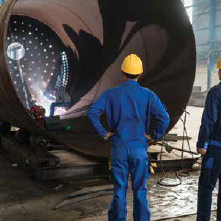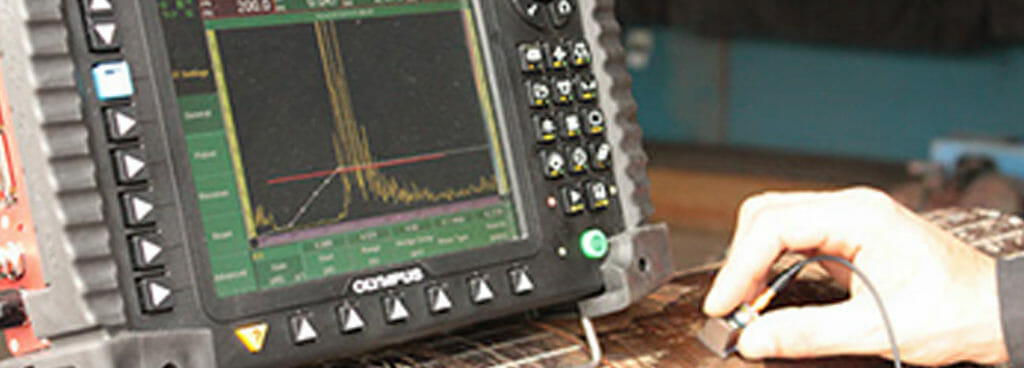Cutting-edge Techniques to Fillet Weld Assessment and Screening: Enhancing Weld Quality and Compliance Requirements
In the realm of welding, the quality and integrity of fillet welds play a crucial role in making sure the architectural stability and dependability of different commercial parts. With the constant drive for improved efficiency and conformity with strict criteria, the exploration of cutting-edge techniques to fillet weld examination and testing has come to be necessary.
Advanced Non-Destructive Screening Approaches
Utilizing cutting edge technologies, advanced non-destructive screening approaches play a critical duty in guaranteeing the stability and high quality of fillet welds. These methods, such as phased range ultrasonic screening (PAUT) and magnetic fragment testing (MPT), offer in-depth insights into the weld's interior framework without causing any damage to the product. PAUT, for example, utilizes multiple ultrasonic components to evaluate the weld from various angles, offering an extensive visualization of potential defects like lack of fusion or cracks.
Similarly, MPT is efficient in spotting surface-breaking defects by using a magnetic area and iron particles to the weld location. This method is especially helpful for determining gaps that might endanger the weld's strength. By using these innovative non-destructive testing strategies, weld examiners can properly analyze the quality of fillet welds, ensuring compliance with sector standards and laws. The capacity to find problems early not only enhances weld quality but additionally prevents costly rework or failures in architectural integrity, highlighting the relevance of these cutting-edge testing approaches in welding inspections.
Robotics and Automation in Evaluation
The integration of robotics and automation has actually revolutionized the assessment process for fillet welds, enhancing efficiency and precision in top quality evaluation. Robotics use exact control and repeatability in inspecting welds, making sure consistent and reliable outcomes. Automated systems can be configured to adhere to certain evaluation paths, making sure thorough coverage of welds and decreasing the threat of human mistake.
Robot assessment systems geared up with sophisticated sensors can detect and measure weld functions with high precision, providing in-depth data for evaluation. These systems can recognize issues such as fractures, lack of blend, and porosity, enabling timely corrective activities to be taken. Additionally, robotics and automation permit real-time data collection and analysis, providing prompt feedback to drivers and promoting quick decision-making procedures.
Moreover, the usage of robotics and automation in fillet weld inspection boosts total efficiency by reducing assessment times and raising examination throughput. By simplifying the evaluation procedure, manufacturers can make certain weld top quality and compliance standards are fulfilled effectively, eventually causing set you back financial savings and boosted product top quality.
Using Expert System for Analysis
Expert system plays a crucial function in enhancing the effectiveness and accuracy of analysis in fillet weld examination procedures. By taking advantage of the power of AI, examiners can enhance the analysis of weld top quality and conformity requirements, resulting in much more specific and trustworthy results. AI algorithms can quickly process huge amounts of data from weld assessments, discovering defects or inconsistencies that may be testing to understand the naked eye. This innovative technology enables real-time surveillance of weld high quality, enabling immediate restorative actions to be taken if any concerns are spotted.
Furthermore, AI systems can pick up from previous evaluation information, continually enhancing their capacity to recognize prospective issues and deviations in fillet welds. This flexible learning ability improves the general quality assurance process, minimizing the possibility of human mistake and making certain that welds satisfy the called for standards. By incorporating synthetic knowledge into fillet weld analysis, sectors can accomplish greater degrees of effectiveness, uniformity, and conformity in their examination techniques.
Portable Equipment for On-Site Examination
 Enhancing area inspection effectiveness, the fostering of portable tools reinvents on-site analysis procedures for fillet welds. These devices offer my response versatility and comfort, enabling assessors to perform extensive evaluations in numerous locations, including tough or remote environments. Portable devices such as ultrasonic screening gadgets, magnetic particle examination devices, and electronic radiography systems provide real-time information and high-resolution imaging capabilities, enabling quick decision-making and prompt feedback on weld high quality.
Enhancing area inspection effectiveness, the fostering of portable tools reinvents on-site analysis procedures for fillet welds. These devices offer my response versatility and comfort, enabling assessors to perform extensive evaluations in numerous locations, including tough or remote environments. Portable devices such as ultrasonic screening gadgets, magnetic particle examination devices, and electronic radiography systems provide real-time information and high-resolution imaging capabilities, enabling quick decision-making and prompt feedback on weld high quality.One significant advantage of mobile devices is their ability to streamline assessment treatments, lowering downtime and improving total efficiency. Examiners can quickly transport these tools to different work sites, eliminating the requirement for delivering heavy equipment or parts to off-site centers. Furthermore, the mobility of these tools promotes cost-effectiveness by minimizing transport expenses and increasing inspection timelines.
Additionally, making use of mobile devices for on-site assessment advertises aggressive quality assurance measures, as assessors can promptly determine and deal with any kind of potential welding issues or disparities. By integrating these ingenious innovations into on-site assessment practices, welding specialists can make sure conformity with market standards and improve weld high quality, ultimately bring about improved architectural integrity and safety and security in various welding applications.
Integration of Data Administration Systems
Having maximized on-site assessment processes with the usage of mobile devices, the following phase entails the seamless assimilation of information monitoring systems to better boost performance and data analysis capabilities in fillet weld inspection and testing. Welding Inspection Racine. By integrating information monitoring systems into the examination process, organizations can simplify data collection, storage, and evaluation. This assimilation allows for real-time monitoring of weld high quality, instant identification of issues, and punctual decision-making to rectify any concerns that might arise during the click inspection procedure
Data management systems play a vital duty in systematizing examination information, facilitating simple access for accredited employees, and making sure data integrity and protection. With the combination of these systems, assessors can create comprehensive records, track historical information for trend analysis, and improve general procedure effectiveness. Furthermore, the assimilation of data management systems allows smooth communication between different stakeholders entailed in the examination procedure, promoting collaboration and improving overall top quality control steps. Eventually, the combination of data management systems offers to boost the requirements of fillet weld assessment and testing, making certain conformity with industry policies and improving weld quality.
Conclusion
In verdict, cutting-edge approaches to fillet weld evaluation and screening have actually significantly enhanced weld quality and conformity standards. Advanced non-destructive testing approaches, robotics, automation, artificial intelligence, portable devices, and data management systems have revolutionized the way weld evaluations are conducted. By utilizing these modern technologies, industries can guarantee that welds satisfy Continue the called for top quality criteria and regulations, eventually enhancing general efficiency and safety in welding procedures.

By utilizing these sophisticated non-destructive testing methods, weld examiners can precisely evaluate the quality of fillet welds, guaranteeing compliance with industry standards and policies. Portable devices such as ultrasonic screening devices, magnetic fragment examination tools, and electronic radiography systems offer real-time data and high-resolution imaging abilities, allowing quick decision-making and prompt comments on weld high quality.
Having optimized on-site examination procedures with the usage of portable devices, the next phase involves the seamless integration of information administration systems to even more improve performance and information analysis capabilities in fillet weld examination and screening (Welding Inspection Racine). Ultimately, the combination of data monitoring systems serves to boost the criteria of fillet weld assessment and testing, guaranteeing compliance with sector policies and boosting weld high quality
 In final thought, innovative strategies to fillet weld evaluation and screening have significantly enhanced weld top quality and conformity standards.
In final thought, innovative strategies to fillet weld evaluation and screening have significantly enhanced weld top quality and conformity standards.
Comments on “Why You Need Expert Welding Inspection Racine for Your Tasks”